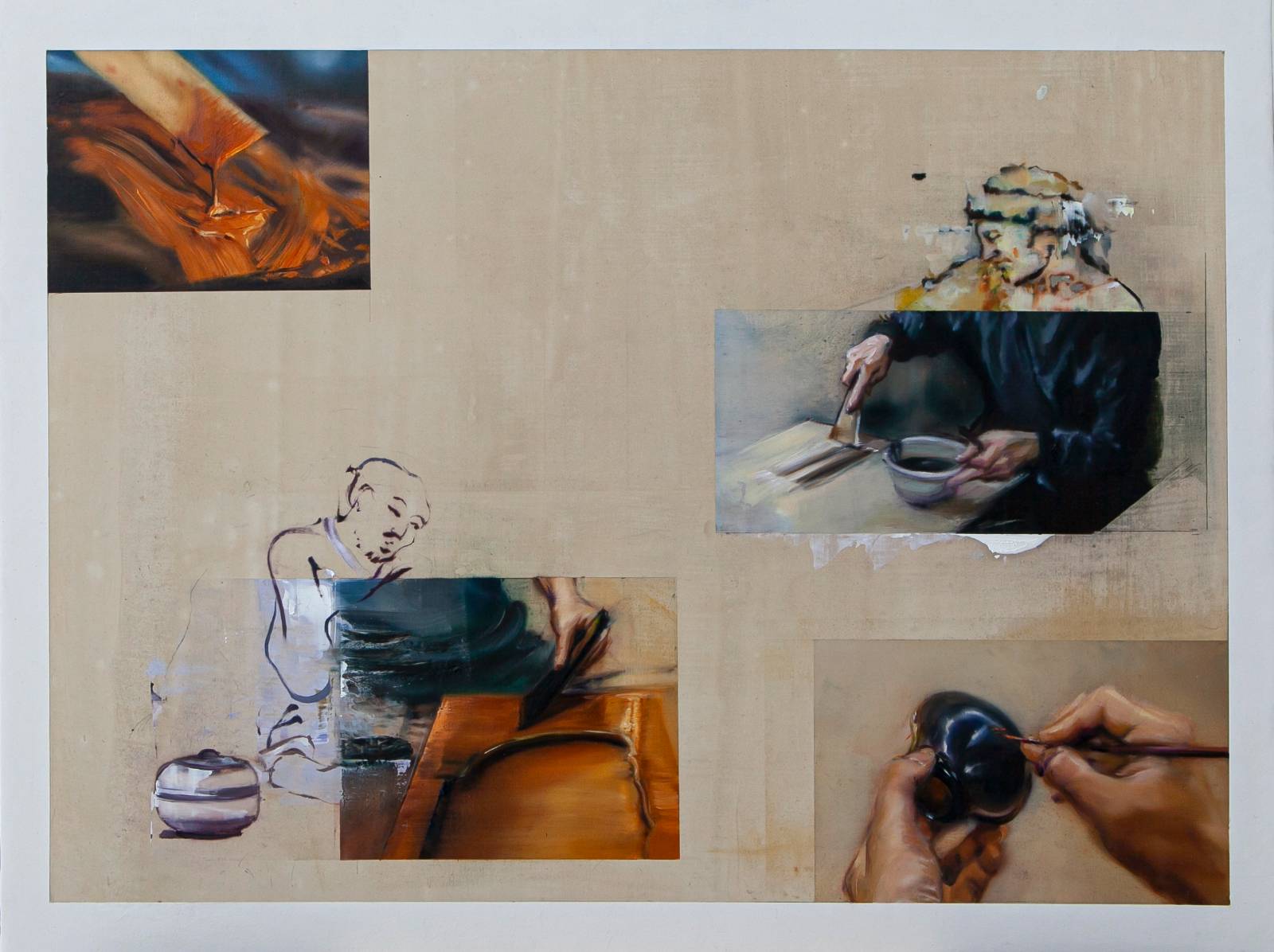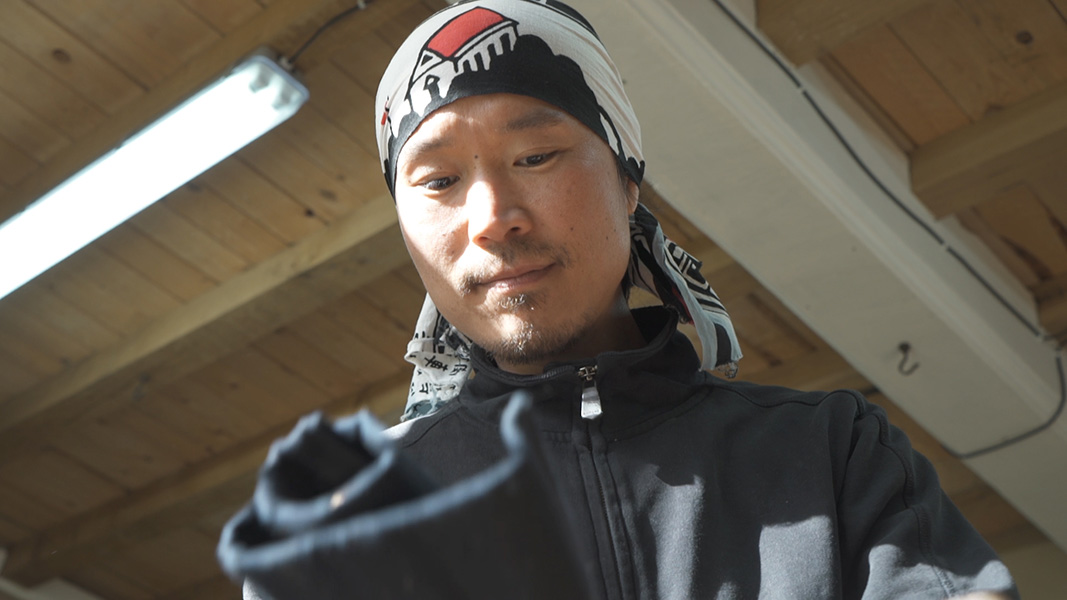Us
The decorative act of lacquering objects transcends mere functionality, expressing human spirituality. Lacquered artefacts, or "Nuri-Mono", can be found across the world throughout history, illustrating a pursuit of beauty that pushes decorative techniques and expression to their limits.
One of the most profound cultural and technological exchanges between East and West occurred along the Silk Road—a movement unparalleled in its impact on humanity. However, unlike modern globalization, the information shared through this ancient network can be seen as "glocalization", where global ideas took root and evolved in local contexts. Western lacquer art, originally influenced by Asian traditions, eventually diverged and blossomed into an independent and unique art form, reflecting its own cultural identity.
In 2021, a group of volunteers came together to launch the Guild LacArt, a voluntary organization with the aim of promoting exchanges between Eastern and Western lacquer art. We see ourselves as a modern-day Silk Road, facilitating cultural and technological exchange through lacquer art. Just as the Silk Road once linked distant regions and nurtured local innovation, we aim to create a network where lacquer can evolve, act as a cultural bridge, and inspire fresh artistic expressions.

Our statement
The old word "guild" represents our feeling of "a group (network) of people who create things with hands." We regard Asian lacquer art and Western lacquer art together as a "culture of lacquering" and aim to entrust the realistic future to these arts & crafts.
Our mission is to connect people and create cross-border lacquer exchange. We need to focus on transferring lacquer art to the next generation. We want to promote restoration techniques to maintain and inherit lacquer art cultural properties as well as lacquer art applications in new ideas and interior architecture etc. In order to reassure the development of lacquer art in the future, we encourage global communication to share common issues we all face and mutual know-how.
For that purpose, we must make lacquer art a familiar presence. We need to highlight lacquer as a material and culture, and play a role in spreading lacquer art. We will coordinate lacquer research exchange and organize exhibitions in order to realize borderless dialogue and prepare a place for learning lacquer art at the grassroots level to acquire a wide range of interests.
To achieve these goals, it is important to build a network of lacquer artists, craftsmen, researchers, and academic institutions active in the world, and contribute as an information source for everyone interested in lacquer art. We believe that inter-contintental conversation about lacquer can breathe new life into Asian & Western lacquer art as well as build intercultural connections that transcend lacquer.
Four pillars that form the foundation of the Guild LacArt:
Crafts & Creation [⇡ back]
by Kenta Takeshige
Crafts are Necessary for Future Sustainable Production Systems

Traditional crafts consist of three elements: natural materials, regional characteristics, and craftsmanship. These everyday crafts were made by unknown craftsmen. Yanagi Soetsu (1889-1961) called the crafts nurtured by the region a new word, Mingei. Mingei theory is currently receiving hot attention in the West. Mingei, where production and environmental balance coexist symbiotically, is a model of manufacturing that considers sustainability.
Designing the future form of crafts
However, the environment surrounding traditional crafts including lacquer art is becoming more severe day by day. How do we deal with the fact/perception that handicrafts are more expensive than industrial products? What should we do to connect crafts to the modern market? A single item of craft work is not "luxury" but "added value".
By transposing the aesthetics of unknown craftsmen (invisible things) into visible form, we re-propose the value of crafts/creation and promote understanding and awareness of all costs/time involved in hand-works. Furthermore, it is necessary to seek collaboration with the latest technology such as digital technology. This is not to say that traditional crafts are neglected. However, crafts must evolve with the times and move forward.
Asian & Western Lacquer Art [⇡ back]
by Vincent Cattersel

When East Asian lacquerware first reached Europe in the late 16th century, Europeans were struck by the material qualities of lacquer: a high-gloss surface with brilliant decorations contrasting a deep black background, and the exceptional durability that protected the the object from heat, water, and the daily wear and tear.
Having these highly desirable properties combined into a single material and technology was unknown to Europeans at that time and were beautifully captured by the authors of the oldest known art-technical source on European lacquering (Stalker and Parker, 1688, Oxford):
‘True, genuine Japan (ed. East Asian lacquer), like the Salamander, lives in the flames, and stands unalterable, when the wood which was imprison’d in it, is utterly consumed. Just so the Ancestor of the Ancients, the cloath in which they wrapped the dead bodies, lay unchanged and entire on the Funeral Pile, and preserved the body, when reduced to ashes, from being mixt with common, and undistinguisht dust. Not that tis only strong and durable, but delightful and ornamental beyond expression: What can be more surprizing, than to have our Chambers overlaid with Varnish more glossy and reflecting than polish Marble? No amorous Nymph need entertain a Dialogue with her Glass, or Narcissus retire to a Fountain, to survey his charming countenance, when the whole house is one entire Speculum. To this we subjoin the Golden Draught, with which Japan is so exquisitely adorned, than which nothing can be more beautiful, more rich, or Majestick: Let not the Europeans any longer flatter themselves with the empty notions of having surpassed all the world beside in stately Palaces, costly Temples, and sumptuous Fabricks; Ancient and modern Rome must now hove place: The glory of one Country, Japan alone, has exceeded in beauty and magnificence all the pride of the Vatican at this time, and the Pantheon (…)’
Drawn by these unique properties and the economic potential, European artisans embarked on a mission to replicate a European equivalent using locally available materials (e.g., resins, gums and drying oils). This endeavour spurred innovation and ultimately resulted in a Western counterpart, called ‘European lacquer’. For most of the 17th century, European lacquerwares imitated the material-technological characteristics and the decorative canon of East Asian lacquerwares. By the late 17th and first half of the 18th century, however, they gradually evolved into an independent decorative technology and style that would remain deeply embedded in Europe’s artistic culture for centuries to come.
This brief historical context illustrates the technological and stylistic relationship between East Asian and European lacquer. Yet, more importantly, it reveals how artistic traditions that transcend local boundaries and enter a global sphere can spark innovation, (re)shape artistic practice, and leave a lasting cultural impact through transcultural dialogue. This dynamic and reciprocal process of cross-cultural and cross-disciplinary exchange lies at the very core of Guild LacArt’s vision and goals. By connecting a global network of lacquer enthusiasts across diverse cultural, artistic, and disciplinary backgrounds, Guild LacArt’s ambition is to foster cross-cultural and cross-disciplinary exchanges of expertise, practices, and visions. Ultimately fostering out-of-the-box creativity, artistic and art-technical experimentation, cross-disciplinary collaboration, and novel valorisation methods that engage and inspire young and established artists, scholars, and the general public in the art of lacquering.
Conservation & Restoration [⇡ back]
by Delphine Mesmaeker

The world of lacquer is currently divided into three primary categories: vegetable "Asian lacquer", "European lacquer" or "European varnish", and new types of "synthetic lacquer", such as nitrocellulose and polyurethane lacquers. The conservation and restoration treatment of cultural assets are affected by their origins and composition.
The conservation/restoration of cultural property is defined by the International Council of Museums- Committee for Conservation (ICOM-CC) as: "The conservation restoration treatment are all measures and actions aimed at safeguarding tangible cultural heritage while ensuring its accessibility to present and future generations". [1]
Furthermore, the European Confederation of Conservator-Restorer's Organization (E.C.C.O.) issues guidelines for professionals to help them honor their responsibilities for the preservation of artifacts. According to article 5, "The conservator-restorer shall respect the aesthetic, historic and spiritual significance and the physical integrity of the cultural heritage entrusted to her/his care". [2]
However, the implementation of conservation treatments is approached and carried out in specific ways depending on the country and the object.
In Europe, conservation heavily draws on the writings and concepts of Cesar Brandi[3], Paul Philippot, and recognized institutions in the heritage conservation field. Recognizability and the reversibility of any intervention on conservation treatment of artwork are highly valued in Europe, leading to a preference for the use of materials that differ from the original. In contrast, in the East, especially in Japan, it is important to respect the work of art as a whole, taking into account metaphysical, ethical, philosophical and technical factors.
On the western side, there is an emphasis on using reversible products, while in Japan, there is more focus on preserving the original material. As a result, lacquer, a non-reversible material, is employed for each stage of conservation treatment and restoration in Japan.
However, Catherine Allasimone[4] argues that Japan's participation in international organizations like UNESCO (1951) and ICCROM (1967) has had a significant impact on its receptiveness to the Western model of cultural heritage conservation.
In the past two decades, many collaborative research initiatives and workshops have facilitated a greater integration of Eastern and Western preservation practices, with each side valuing and accommodating the perspectives, techniques, and approaches of the other. Treatment projects, such as those conducted on the Mazarin chests at the Victoria and Albert Museum[5] and the Japanese chest at the Rijksmuseum[6], are the result of these developments.
The introduction of hybrid treatments, combined with training Westerners in Japanese restoration techniques and collaboration between East and West, facilitated the introduction of conservation treatments for lacquered works that consider the work in its entirety while respecting all the senses of the heritage.
Here you'll find the full version of this article
* * *
1: ICOM-CC definition: icom-cc.org/en/terminology-for-conservation, consulted October 8th 2023). [⇡ back]
2: E.C.C.O. professional Guild lines, [PDF]: ecco-eu.org/wp-content/uploads/2021/03/ECCO_professional_guidelines_II.pdf, consulted October 8th 2023). [⇡ back]
3: Brandi C., Théorie de la restauration, traduit par Colette Déroche, Centre des Monuments nationaux/ Monum, ed. du patrimoine, 1989. [⇡ back]
4: Allasimone, Protection du patrimoine intangible et politique culturelle au Japon, Thèse de doctorat, Atelier National de reproduction des thèses, 2003. [⇡ back]
5: vam.ac.uk [⇡ back]
6: rijksmuseum.nl [⇡ back]
Ethics & Knowledge [⇡ back]
by Fabián Espinosa-Díaz

Using technology without taking its social and cultural implications into account can twist its original purpose. We humans have been inventing and using technology for ages, but as complexity increases, our moral compass must also evolve.
As creators, thinkers, scholars, and humans, we strongly believe in using technology wisely with a critical mindset. We are convinced that no objective is worth wrongdoing, and that seeking knowledge, asking the questions and keeping a curious, open and humble attitude is always preferable to making assumptions. This is why we aim to be careful and thoughtful about how we use the applications we rely on to communicate and further develop our work. When possible, we will also use open source software, avoid unethical and unnecessary tracking tools, and provide our materials and articles with accessibility in mind.
Furthermore, in pursuit of the greater good, we advocate the establishment of a network based on shared knowledge, inclusion and collaboration. We believe that fostering a culture of continuous learning, combined with open and honest communication among members, will promote a thriving environment. And only in such a thriving and healthy environment we will attract like-minded creators to our community and keep those who are already on it.
